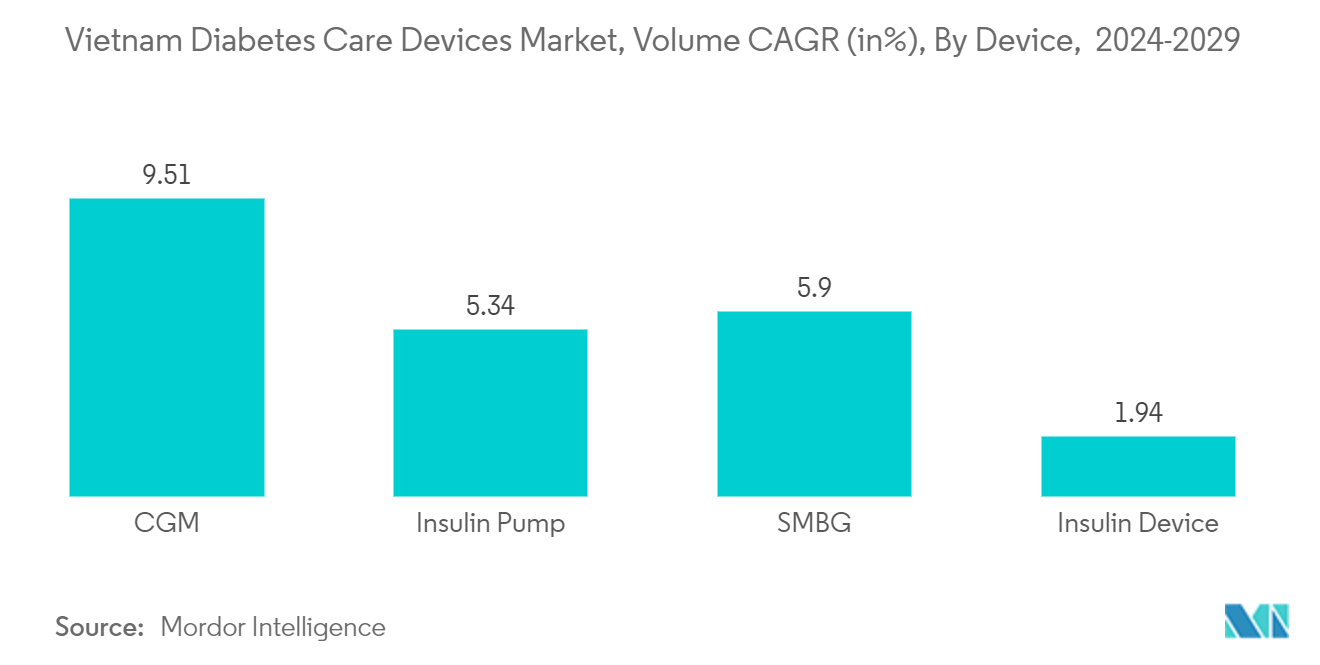Market Trends of Vietnam Diabetes Care Devices Industry
Management Devices Hold Highest Market Share in Vietnam Diabetes Care Devices Market
Health insurance was introduced in Vietnam over 10 years ago, but the coverage is still relatively low. Vietnam is a low- to middle-income country with a per-capita GDP of around USD 4310. As a result, the expense of diabetes treatment significantly strains a patient's family budget. Diabetes medicine is inexpensive in HCMC as compared to the expense of treating other chronic disorders, including infectious, cardiovascular, and renal problems.
The lack of government policies and healthcare schemes impacts Vietnam's market growth for management devices. The country's population of those over 60 years has created pressures on the healthcare system, as well as social security services and policies. Thus, the government needs to establish new policy programs that can reduce the burden of healthcare costs for diabetes treatment.
Digital companies are trying to improve the conditions of diabetic patients by reminding them when to test their glucose levels and passing the information to doctors and family members. According to a study conducted by GlucoMe (digital diabetes platform), along with Merck, at several endocrinology clinics and hospitals in Vietnam, using GlucoMe applications reduced the risks of the major issues related to diabetes for Type 2 diabetic patients. The awareness among diabetic patients in Vietnam is expected to increase the growth of the market for management devices in the country during the forecast period.

Increasing Diabetes Population in Vietnam
Diabetes is one of the four major noncommunicable diseases (NCDs), and its global prevalence has steadily increased in recent years. In Vietnam, Diabetes is rising at a rate of about 6.23% every year, and it has become a serious health and economic burden for Vietnamese society. Economic growth and changes in the social environment impact disease patterns ranging from infectious illnesses to noncommunicable diseases, with diabetes being one of the seven top causes of death and disability in Vietnam.
The prevalence of obesity in Vietnam is still relatively low, although it has increased substantially during the past decade, particularly over the past 5 years. A major shift in dietary habits parallels the changes in obesity prevalence rates. Cigarette smoking is a major risk factor for diabetes in Vietnam. A recent meta-analysis suggests that cigarette smokers are 44%more likely to have diabetes than non-smokers. Although there is a high prevalence of cigarette smoking in Vietnamese men, this trend is decreasing.
Diabetes is recognized as a public health burden in Vietnam, and public health authorities have taken measures to reduce the burden-the diabetes burden in Vietnam results from several epidemiologic changes and drivers. Diabetes has the potential to reach epidemic proportions and, as a result, confer tremendous public health and economic burden in Vietnam. Although the prevalence of diabetes in rural areas is still relatively low, it is rising. In major cities, diabetes is as high as in other Western populations.
The increase in the diabetes prevalence rates correlates with changes in risk factors, such as adiposity and a Westernized dietary pattern. It is generally believed that diabetes is preventable through lifestyle changes that include healthy eating and consistent physical activity. Still, more research is needed to validate this premise for the Vietnamese community.


